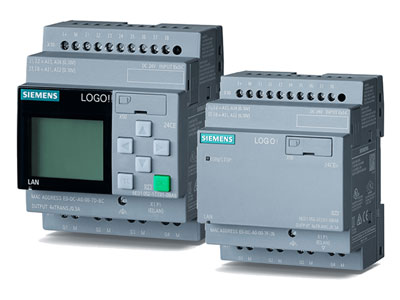What Are The Parts Of PLC?
Key Takeaway
The parts of a PLC include the central processing unit (CPU), which is the brain of the PLC, and a mounting rack to hold components. It has read-only memory (ROM) for storing the firmware and random access memory (RAM) for temporary data. Input/output (I/O) modules connect the PLC to sensors and actuators. A power supply provides the necessary electrical power. Lastly, a programming device is used to write and load the PLC program. These components work together to control and automate industrial processes effectively.
Core Components of a PLC
At the heart of a PLC lies its processor, which acts as the brain, executing the programmed logic and controlling the system’s operations. Surrounding the processor are input and output modules, responsible for interfacing with sensors, actuators, and other devices in the industrial environment.

Input and Output Modules
Input and output modules are fundamental components of a Programmable Logic Controller (PLC) system, playing a crucial role in interfacing with the external world. Input modules serve as the gateway for receiving signals from various field devices, including sensors, switches, and transmitters. These modules convert analog or digital signals from the field devices into a format that the PLC’s processor can interpret and process. By accurately translating physical phenomena into digital data, input modules enable the PLC to monitor and respond to changes in the industrial environment.
On the other hand, output modules facilitate the transmission of control signals from the PLC to actuators and devices such as motors, valves, and indicators. These signals, generated based on the programmed logic within the PLC, dictate the desired actions to be executed in response to specific conditions or inputs. Whether it’s activating a motor to start a conveyor belt or opening a valve to regulate fluid flow, output modules play a pivotal role in translating the PLC’s decisions into tangible actions in the physical world. Thus, understanding the functionality and configuration of input and output modules is essential for engineers to design and implement effective control systems in industrial settings, ensuring seamless automation and operation.
Power Supply and Processor
The power supply unit within a Programmable Logic Controller (PLC) serves as its lifeblood, ensuring uninterrupted operation by providing a stable and reliable source of power to all its components. This safeguard is crucial in industrial environments where power fluctuations or outages could disrupt critical processes, potentially leading to production losses or safety hazards. By regulating the incoming electrical supply, the power supply unit shields the PLC from voltage spikes or drops, ensuring consistent performance and longevity.
In parallel, the processor acts as the brain of the PLC, responsible for executing instructions and processing data to carry out control tasks and decision-making processes. Comparable to a human brain processing information to generate responses, the processor interprets input signals, executes programmed logic, and generates output signals to control external devices. Its efficiency and speed are paramount, as it must handle numerous operations simultaneously while maintaining real-time responsiveness to ensure seamless operation of the PLC system. Thus, both the power supply unit and processor are indispensable components that work in tandem to empower the PLC to fulfill its role in industrial automation effectively.
Communication Interfaces and Expansion Modules
Communication interfaces are essential components of PLCs, serving as the conduits for data exchange and connectivity with external devices or systems. These interfaces, which can include Ethernet ports, serial communication ports, or fieldbus connections, enable seamless communication between the PLC and various peripherals, such as sensors, actuators, HMIs (Human Machine Interfaces), or SCADA (Supervisory Control and Data Acquisition) systems.
In industrial settings, where interconnectedness is paramount for efficient automation, these communication interfaces facilitate real-time monitoring, control, and data acquisition, thereby enhancing productivity and operational efficiency. Additionally, expansion modules further augment the capabilities of PLC systems by providing the flexibility to expand input/output points or incorporate specialized functionalities tailored to specific application requirements.
Whether it’s integrating additional sensors for process monitoring or expanding control capabilities for complex machinery, these expansion modules empower engineers to customize and optimize PLC systems to meet the evolving needs of industrial automation. Thus, communication interfaces and expansion modules play pivotal roles in enhancing the flexibility, scalability, and performance of PLC systems, ensuring they remain adaptable and responsive to the dynamic demands of modern industrial environments.
Maintenance and Replacement of PLC Parts
Maintenance and replacement of PLC parts are essential aspects of industrial operations, ensuring the smooth functioning and reliability of automated systems. Regular maintenance involves scheduled inspections, cleaning, and testing of PLC components to identify any signs of wear, corrosion, or other issues that could potentially lead to malfunctions or failures. By proactively addressing these issues, engineers can prevent unexpected downtime and costly production interruptions.
Furthermore, understanding the process of troubleshooting and replacing faulty components is crucial for maintaining operational continuity. This involves diagnosing the root cause of any malfunction, whether it’s a defective input module, a faulty processor, or a malfunctioning communication interface, and taking appropriate corrective actions. In some cases, this may entail replacing the faulty component with a new one and ensuring that it is properly configured and integrated into the PLC system.
By adhering to a proactive maintenance and replacement strategy, engineers can prolong the lifespan of PLC systems, optimize performance, and minimize the risk of unplanned downtime, ultimately contributing to enhanced productivity and efficiency in industrial settings.
Conclusion
In conclusion, a comprehensive understanding of the parts and functions of a PLC is indispensable for engineers working in industrial automation. By familiarizing themselves with the core components, input/output modules, power supply, processor, communication interfaces, expansion modules, and maintenance procedures, engineers can effectively manage and maintain PLC systems, ensuring smooth and efficient operation in industrial environments.
